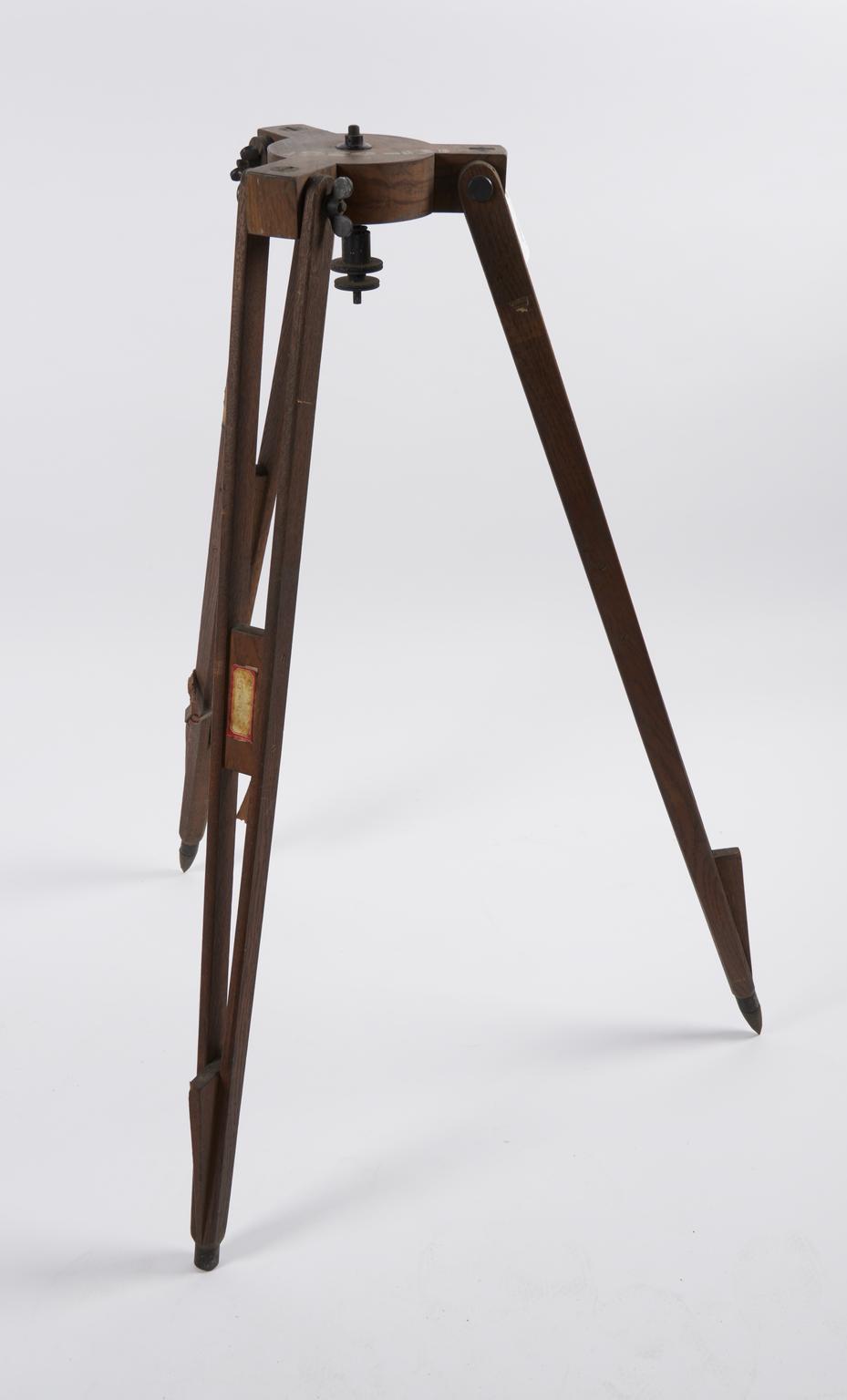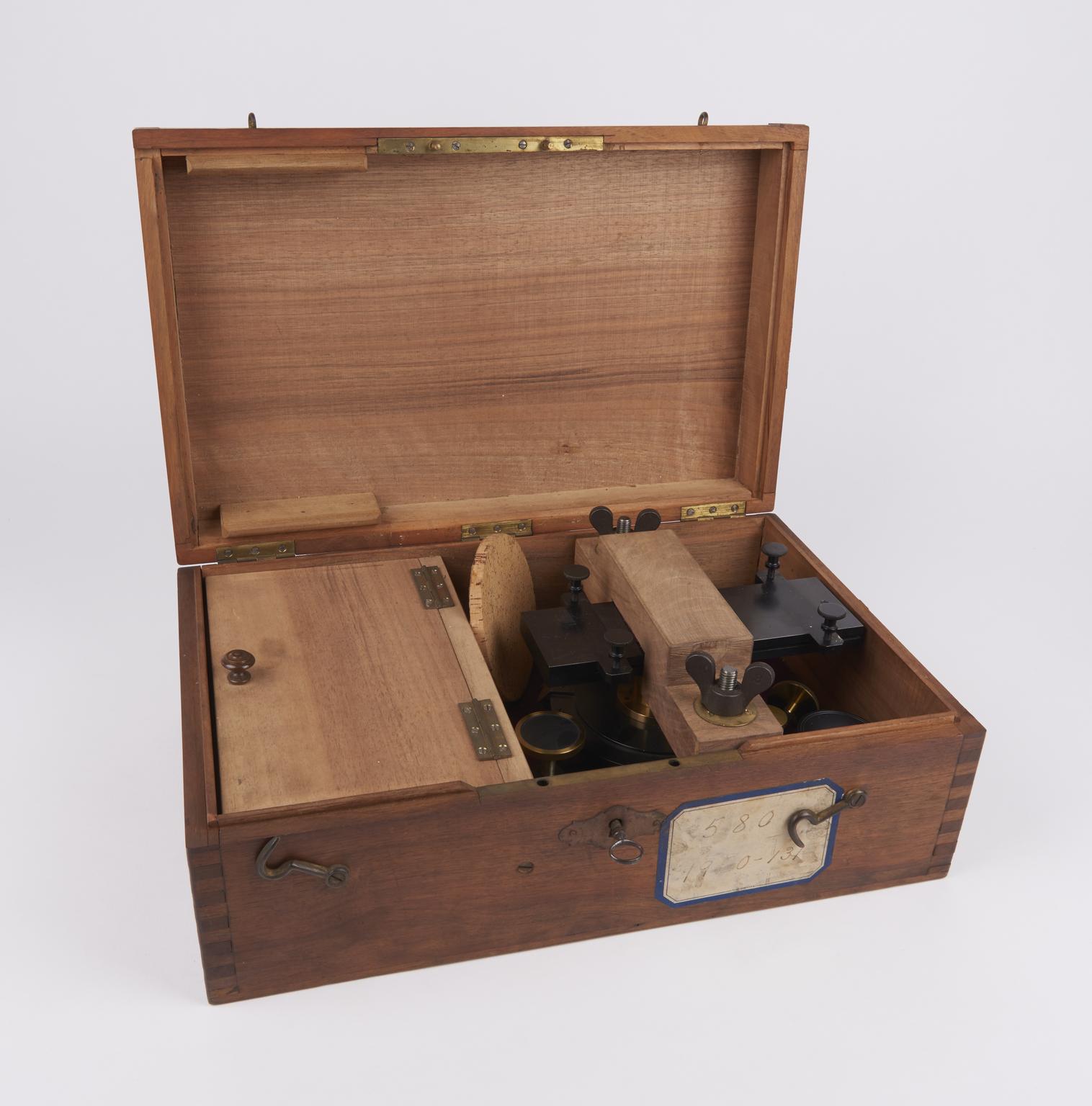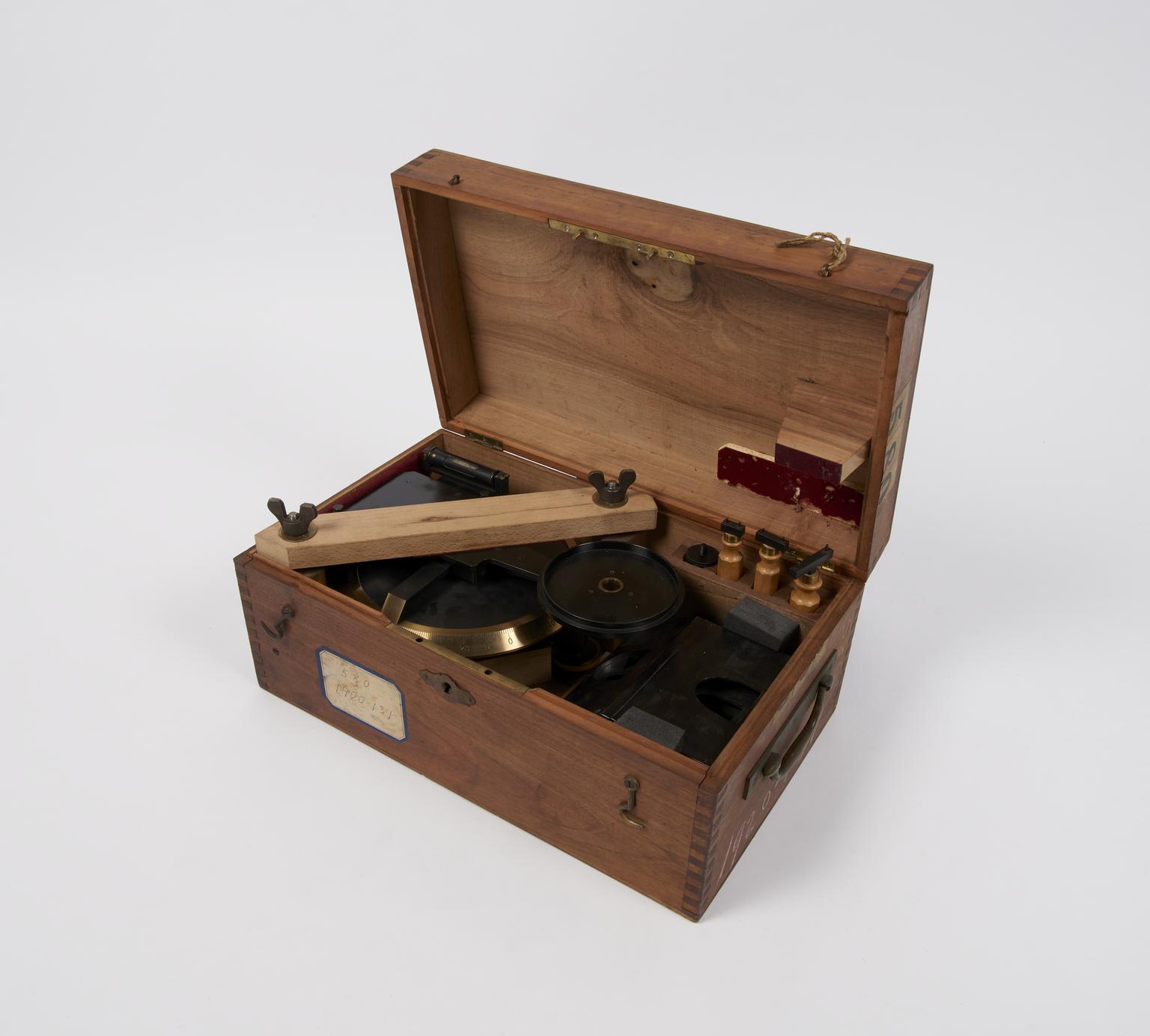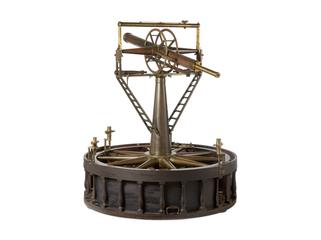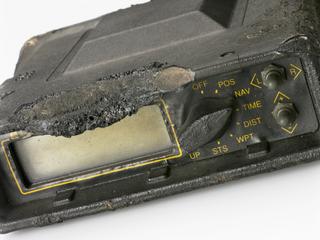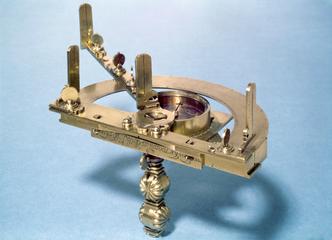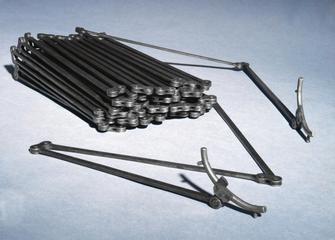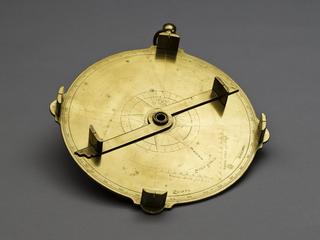Prismatic astrolabe, including sighting telescope, base, main stand and accessories, including prisms, designed by Claude and Driencourt, made by Jobin, c. 1900. Objects in fitted wooden cases.
The vast majority of observations made by surveyors establish only the relative positions of points on the earth's surface. When a whole country is being mapped, however, it becomes necessary to determine the absolute positions of a number of key points, that is, to find the latitude and longitude of each point.
By the middle of the sixteenth century, determinations of latitude were being made by observing the height of the sun or the pole star, using astrolabes and similar instruments. The determination of longitude in the field proved more difficult. It consist essentially of finding the difference between local time at the place of observation and standard time at a place of known longitude, for example, at the Royal Greenwich Observatory. The difficulty lay in the lack of accurate timekeepers and was not resolved until the invention of the pendulum clock by Huygens in 1657.
The prismatic astrolabe illustrated here was designed by Claude and Driencourt in about 1900 to enable surveyors in the field to determine latitude and local time by applying Gauss' method of equal altitudes. The instrument is used with a chronograph and the times found when selected stars attain an altitude of 60 degrees. Having listed these times and found the corresponding positions of the stars relative to the earth by consulting astronomical tables, the surveyor has all the information required to calculate the latitude and longitude of the point of observation.
